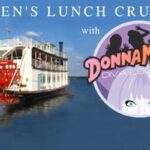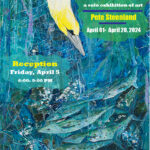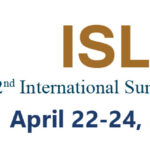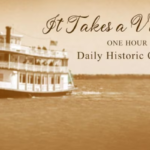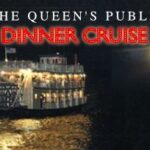
By: Cindi Courbat
For centuries, Florida’s tropical climate, with its lush vegetation and its bountiful supply of natural water resources has provided a near-perfect paradise for plants, birds and sea animals.
Florida’s tropical oasis, however, is not as pristine or pollution-free as it used to be — and that has fishermen, watersport enthusiasts, environmentalists, wildlife advocates and even some government officials actively hoping to educate the public and make a difference before it is too late.
 Ben Shepherd, an Orlando-based biologist with the Florida Fish and Wildlife Conservation Commission (FFWCC), said his agency is concerned about protecting waterways and wildlife on the Space Coast and throughout the state.
Ben Shepherd, an Orlando-based biologist with the Florida Fish and Wildlife Conservation Commission (FFWCC), said his agency is concerned about protecting waterways and wildlife on the Space Coast and throughout the state.
“We currently have a number of biologists conducting research in Fellsmere. Our studies include looking at ways to preserve bird habitats and to attract more birds. We also use Geographical Information Systems (GIS) and mapping techniques to identify and monitor where various bird species are congregating and nesting,” says Ben Shepherd.
The Indian River Lagoon, which spans from just north of Brevard County to Fort Pierce, is home to more than 4,000 species of birds, plants and animals, including 30 endangered species. The Florida scrub jay (Florida’s only endemic bird) and the bald eagle are among local endangered species. The Florida Fish and Wildlife’s website features two mapping tools: the bald eagle nest locator and the water bird locator.
Each year, the agency teams up with the Florida Audubon Society to conduct a bird count which takes place along the Greater Florida Birding and Wildlife Trail which is a 2,000 mile highway trail linking 515 bird and wildlife viewing sites throughout the Sunshine State. In 2012, a local bird count conducted west of Mims near Christmas spotted 496 native Florida birds and accidentals, 14 established non natives and four native species now considered extinct.
Meanwhile, biologists and environmentalists say the number of bird sightings in Florida will continue to decrease due to several mitigating factors.
Habitat loss and degradation, increasing levels of disturbance from beach nourishment, coastal development, and  even recreational activities all contribute to the problem. Toxins, however, present the greatest risk.
even recreational activities all contribute to the problem. Toxins, however, present the greatest risk.
“The greatest threat is red alga, brown alga and super-bloom alga,” Ben said. “This not only has a negative effect on birds — it also has us very concerned about fish, manatees and sea turtles.”
A post on the Florida Audubon Society’s website confirms the severity of this threat, especially on the Space Coast:
“There is an ecological crisis in Indian River Lagoon. Large quantities of water with high levels of nutrient pollution from Lake Okeechobee and the St. Lucie Basin are being discharged to tide, leading to toxic algae blooms in the lagoon’s waters. There have been numerous, mysterious reports of deaths of pelicans, manatees, and dolphins. Harmful bacteria have also been detected in some areas making the water dangerous for human contact.”
Jason Frederick, a local wildlife rescue specialist and current vice president of the Space Coast Audubon Society said the number of local manatee deaths has increased significantly with last year setting an all-time record.
 The Florida manatee is an endangered animal whose population is estimated at around 5,000. During the first three months of 2013, 460 dead manatees were documented statewide. Brevard County is still waiting on a report from the Florida Fish and Wildlife Commission to determine the extent of the local loss, he said.
The Florida manatee is an endangered animal whose population is estimated at around 5,000. During the first three months of 2013, 460 dead manatees were documented statewide. Brevard County is still waiting on a report from the Florida Fish and Wildlife Commission to determine the extent of the local loss, he said.
“This past summer we had several manatee, dolphin and large brown pelican deaths. The young pelicans die because they feed on small minnows and don’t get enough nutrition. They starve themselves, but many other animals die due to poisons in the water,” said Jason Frederick.
Biologists believe the escalating risk is due primarily to red tide which indicates a higher than normal population of microscopic alga.
Last year, devastating alga blooms destroyed an estimated 60 percent of the natural saw-grasses in Indian River lagoons putting a damper on the local commercial fishing industry and raising health concerns regarding the safety of drinking water and fresh shellfish.
The Florida Fish and Wildlife Commission is committed to monitoring the situation and now conducts weekly tests with findings reported on their website. The Indian River Lagoon report for November 1, 2013 stated:
“Patchy blooms of various organisms including Aureoumbralagunensis and Takayama species continue in the Indian River Lagoon system (Indian River Lagoon, Mosquito Lagoon, Banana River.) These blooms have resulted in discolored water and fish kills in some locations.”
On September 29, 2013 to coincide with National Estuary Day, thousands of fishermen, environmental activists and local residents joined forces to call on government officials to make the Indian River Lagoon a greater priority.
The Hands Across the Lagoon event called for residents to gather along seven causeways at high noon for 15 minutes to form human chains of solidarity on behalf of the ailing river. Local and national media reports estimated anywhere from 250 to 600 people gathered at each bridge. Jack Unger of Cocoa Beach showed up at the Melbourne causeway and said he can no longer make a living as a fisherman due to the scarcity of fish and because of growing health concerns. Marla and Joe Walters of Melbourne said they retired to Florida specifically to live on the river and to enjoy all it had to offer. They are now considering moving back north.
Similar sentiments echoed with the autumn breeze as participants held banners and lifted their hands toward a perfectly cloud-free sky.
Jason Frederick blames federal, state and local budget cuts for some of the problems.
“We used to have a Marine Patrol Office in Titusville that cruised our waters all the time. They could enforce our ordinances and report any environmental hazards but that department has been gutted,” said Jason.
His advice for Space Coast residents is to become personally proactive by staying abreast of environmental issues and by not contributing to the problem.
“The big thing right now is a new fertilizer ordinance. If residents would simply cut the amount of chemicals used on their lawns, that will reduce the amount of toxins that end up in our water.”
Florida’s natural water resources are an important commercial, recreational and economic resource and an integral part of the beauty of the Space Coast. Organizations and individuals continue to team up to create more awareness and appreciation, ensuring that the area’s beauty and wildlife will be around for future generations to enjoy.
To read the Audubon’s report on Indian River Lagoon issues, please click here.
To find out more about the Greater Florida Birding and Wildlife Trail, click here.
To visit the Florida Fish and Game Conservation Commission, please visit MyFWC.com.


